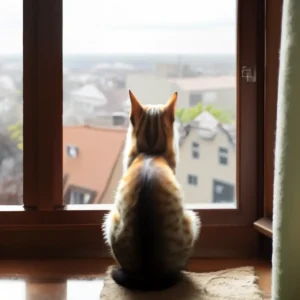The Korat cat, also known as Si-Sawat or Malet, is a stunning and distinctive breed that originated in Thailand over 900 years ago. With its silver-tipped blue-gray coat, heart-shaped face, and large green eyes, the Korat has captured the hearts of cat lovers around the world. This breed is not only known for its unique appearance but also for its intelligent and affectionate nature.
Table of Contents
Origins and History
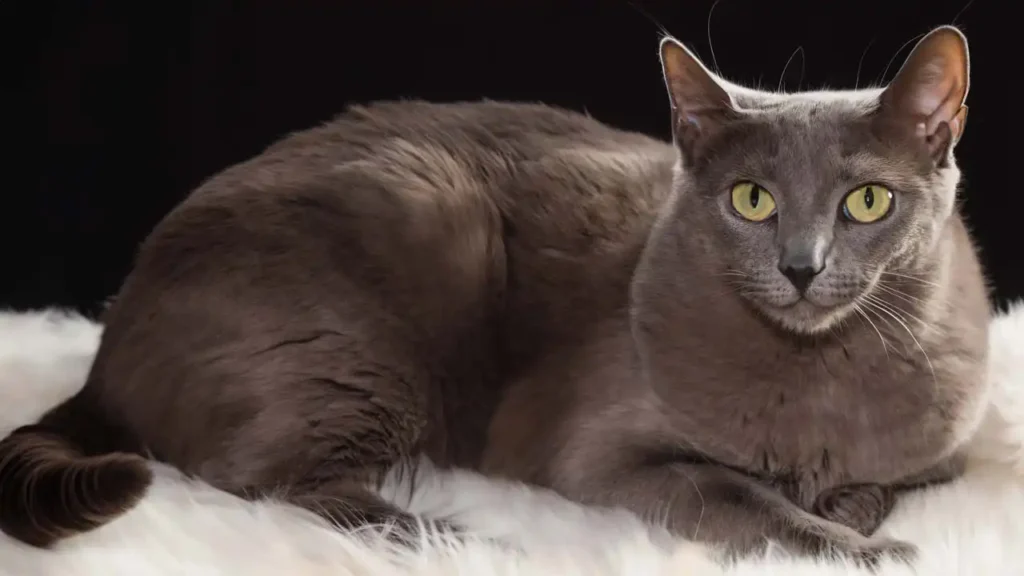
The Korats cats have a rich and fascinating history that dates back centuries. It is believed to have originated in Phimai, Thailand, and is named after its province of origin, Nakhon Ratchasima Province. In Thailand, the breed is known as Si sawat, which means “color of the sawat seed.” The Korat is highly revered in Thai culture and is considered a symbol of good luck. Traditionally, Korats were given as gifts to newlyweds or people of high esteem to bring luck and happiness.
The first recorded mention of the Korat is found in the Thai Tamra Maew (The Cat-Book Poems), a manuscript dating from the Ayutthaya Kingdom (1351 to 1767 AD). Although the illustration in the book is not detailed, it is believed to represent the Korat breed. The breed’s appearance has remained remarkably consistent over the centuries, making it one of the oldest and most stable cat breeds in existence.
Characteristics and Appearance
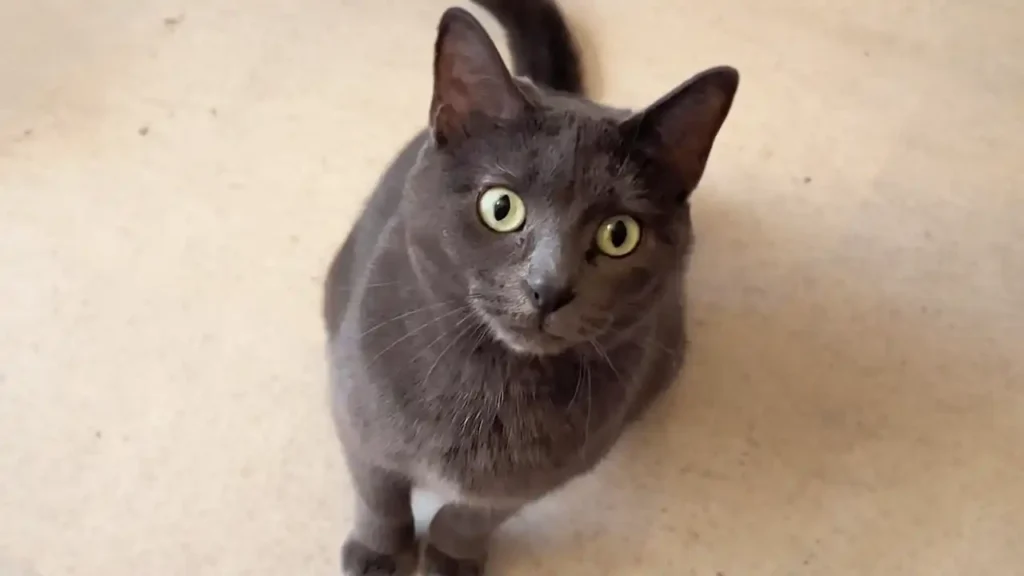
The Korat cat is a small-to-medium-sized feline with a sturdy and robust build. It has a semi-cobby body and a relatively low percentage of body fat. Despite its small size, the Korat is surprisingly heavy due to its muscular physique. The most striking feature of the Korat is its silver-tipped blue-gray coat, which gives it a shimmering appearance.
The Korat has a single coat of short hair, which is easy to groom. Its fur is rooted in a lighter silver-blue color and gradually deepens to a richer blue with silver tips, especially on the muzzle and toes. The Korat’s eyes are large and peridot green, although kittens may have muddy or golden-green eyes that change as they mature. The head of the Korat is heart-shaped when viewed from the front, and its ears are somewhat large and erect, giving it an alert expression.
Temperament and Korat Cat Personality
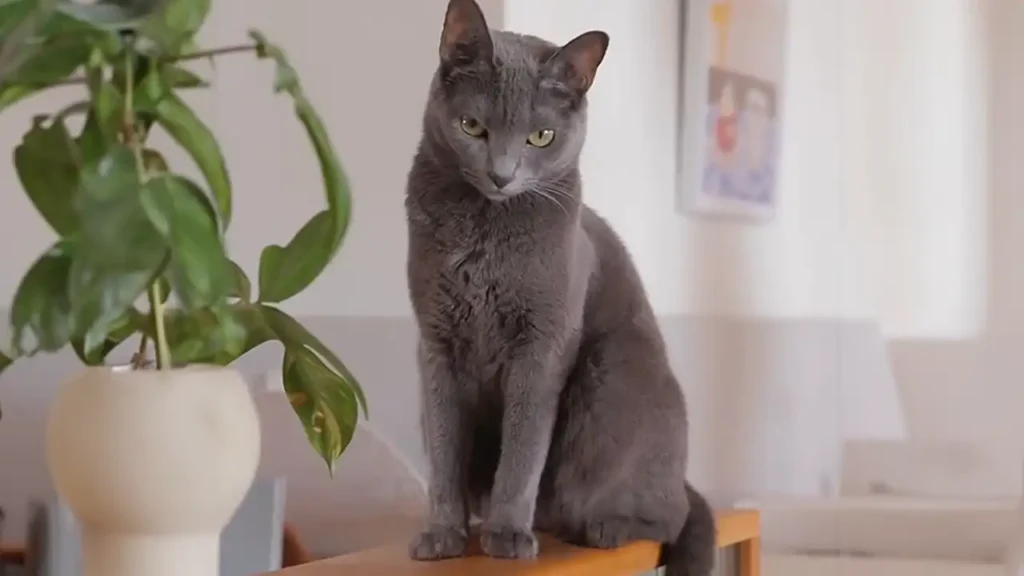
The Korat cat breed is known for its unique temperament and personality traits. It is an intelligent and playful breed that forms strong bonds with its human family. Korats are highly social cats and enjoy being involved in their owner’s daily activities. They are known for their loyalty and will often follow their preferred family members around the house. Korats can also be demanding of attention and affection, so it’s important to give them the love and interaction they crave.
These cats have a good memory and are highly adaptable. They can navigate their way back home even if they are brought to an unfamiliar place. Korats also have a hierarchical system within their groups, with the sergeant of the group eating first and the others following suit. They are protective of their kittens and will teach them survival skills by providing small animals for practice, adult Korats cats bring live small animals (such as mice or insects) for their kittens to chase, catch, and practice hunting on. This behavior helps the kittens develop their hunting and survival skills
Living Needs and Care
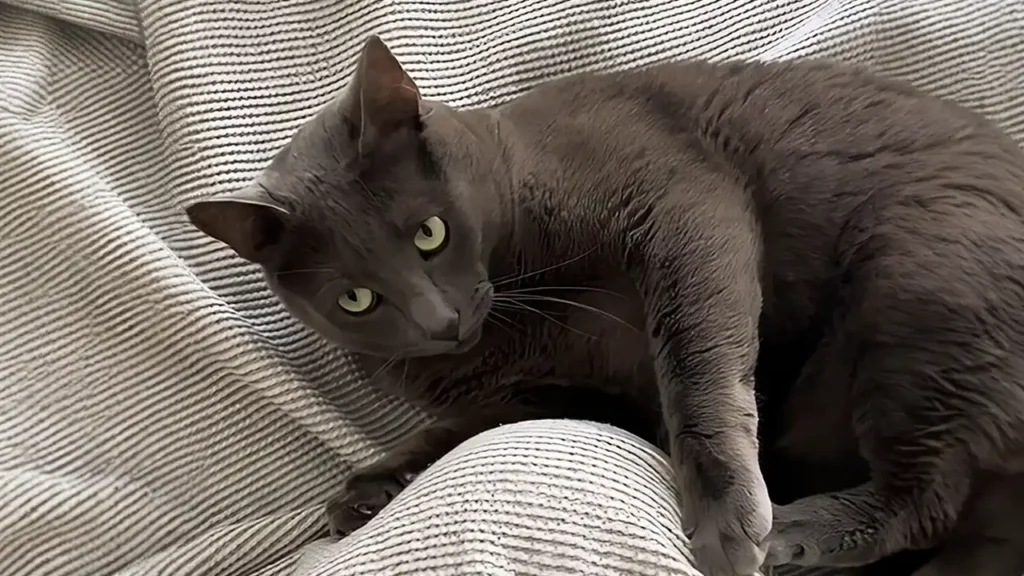
The Korat cats is an active and inquisitive breed that requires mental and physical stimulation. They enjoy interactive play and simulated hunting games, so it’s important to provide them with plenty of enrichment activities. Playtime is not only fun for the Korat but also a bonding experience with their human companions. Puzzle toys and training sessions can help keep their intelligent minds engaged.
While Korats can adapt to various living conditions, they thrive in a calm environment with ample space to explore. They are not ideal for busy family homes and may prefer a quieter setting. These cats do not like to be left alone for long periods of time and can develop separation anxiety if not given enough attention. If you’re considering a Korat, it’s recommended to provide them with a companion, whether that’s another pet or yourself.
Grooming the Korats is relatively easy due to its short, low-shedding coat. Weekly brushing is sufficient to keep their fur in good condition, and regular attention to their ears, teeth, and litter box maintenance is essential. Additionally, providing them with adequate scratching posts, cat trees, and window hammocks will help satisfy their natural instincts and keep them happy and content.
Prominent Korat Cat Breed in media, literature, or art
One of the most famous Korats is “Dcinnie” which was featured in the 1965 edition of “Cats Magazine.” Another notable Korat is “Cedar Glen’s Star Sapphire,” a show cat who won several awards in the 1980s. In literature, a Korat named “Sagwa” is the protagonist in Amy Tan’s children’s book series “Sagwa, the Chinese Siamese Cat.”
Influence of the Korat cat on culture and society
Health and Genetic Considerations
The Korat cat breed is generally a healthy breed with few known health issues. However, it’s important to ensure that the breeder provides written documentation of the health of both parents before purchasing a Korat kitten. Genetic testing for GM1 and GM2 gangliosidosis, a rare genetic condition affecting the nervous system, should be performed to ensure the breed remains free of this disease. Responsible breeding practices can help maintain the health and well-being of the Korat cat breeds.
Owning a Korat Cat
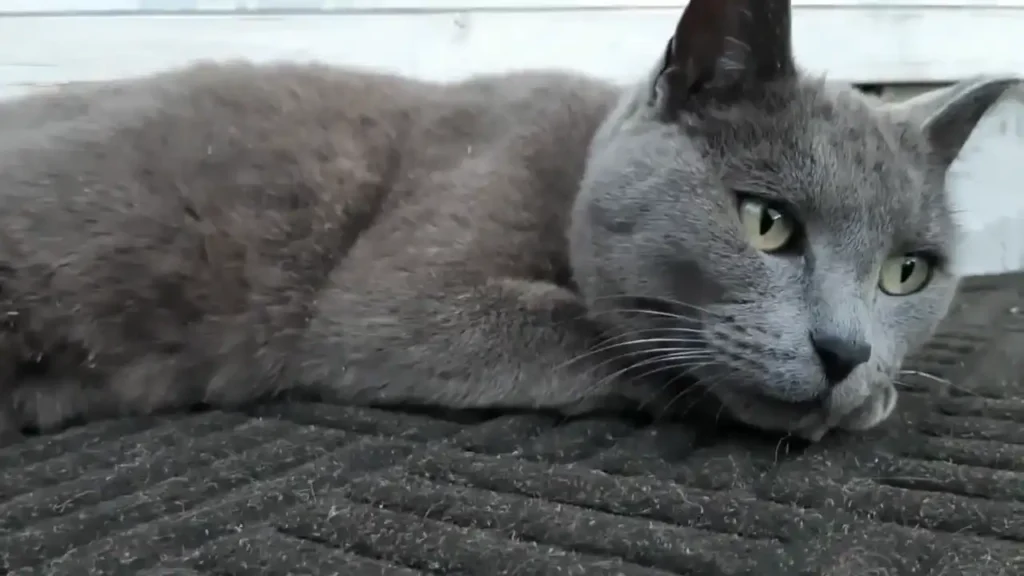
If you’re considering adding a Korat cat to your family, it’s important to understand the responsibilities that come with owning this unique breed. Korats require a loving and attentive owner who can provide them with the mental and physical stimulation they need. They thrive in a calm and quiet environment and may not be suitable for households with young children or a lot of activity.
Finding a purebred Korat can be challenging, as they are relatively rare outside of their native Thailand. Attending cat shows and contacting reputable breeders is the best way to find a Korat kitten. The Cat Fancier Association (CFA) and other reputable organizations can also provide information on registered breeders.
Conclusion
The Korat cat breed is a truly special breed with its striking appearance, intelligent nature, and affectionate personality. Originating in Thailand, this breed has captivated people’s hearts for centuries. If you’re looking for a loyal and loving companion with a touch of luck, the Korat cat may be the perfect addition to your family.
FAQs About Korat Cat
Q: What is a Korat Cat ?
The Korat cat is a breed originating from Thailand, characterized by its distinct blue-grey coat and striking green eyes. Known for its affectionate demeanor, this breed is cherished for its loyalty and is considered a symbol of prosperity and good fortune in Thai tradition.
Q: Are Korat cats rare?
Yes, Korat cats are considered to be a rare breed, especially outside of their native Thailand. Their unique appearance and affectionate nature make them highly sought after, but finding a purebred Korat can be a challenge. It’s important to do thorough research and reach out to reputable breeders or organizations to ensure that you are getting a genuine Korat cat.
Q: How do I know if my cat is a Korat?
To identify a Korat cat, look for their distinctive silver-blue coat, heart-shaped head, and large green eyes. They are medium-sized cats with a muscular build and a sleek, short coat. Korats are known for their affectionate and loyal nature, often forming strong bonds with their owners. If you’re unsure, consulting with a reputable breeder or veterinarian can help confirm if your cat is indeed a Korat.
Q: How much is a Korat?
The price of a Korat cat can vary depending on factors such as the cat’s pedigree, age, and breeder. Generally, you can expect to pay anywhere from $500 to $2000 for a Korat kitten from a reputable breeder. It’s important to remember that the initial cost is just one aspect of owning a cat, as there are ongoing expenses for food, grooming, and veterinary care to consider. However, the love and companionship that a Korat cat provides are truly priceless.
Q: Are Korat cats intelligent?
Yes, Korat cats are highly intelligent. They are known for their problem-solving abilities and can be trained to perform tricks and respond to commands. Their sharp minds make them quick learners, and they enjoy mental stimulation through interactive toys and puzzles. If you’re looking for a clever and engaging feline companion, the Korat cat is an excellent choice.
Q: What are the health issues of Korat cats?
Korat cats are generally healthy and not prone to specific breed-related health issues. However, like all cats, they can still develop common feline health problems such as dental issues, obesity, and urinary tract issues. Regular veterinary check-ups, a balanced diet, and plenty of exercise can help keep your Korat cat in optimal health. It’s important to be proactive in monitoring their well-being and addressing any health concerns promptly.
Q: How long do Korats live?
On average, Korat cats have a lifespan of 15-20 years, with some living even longer with proper care and attention. Their longevity is a testament to their overall health and well-being, making them a wonderful long-term companion for any cat lover. With regular veterinary care and a loving home environment, your Korat cat can enjoy a happy and healthy life for many years to come.
Q: Are Korat Kittens More Expensive Than Adult Cats?
The price of a Korat cat kitten is generally higher than that of an adult cat, as kittens are in high demand and require more care and attention in their early stages of life. However, the initial investment in a kitten can be offset by the joy of watching them grow and develop into a beloved member of your family. It’s important to consider the long-term commitment and expenses associated with owning a Korat cat, regardless of their age.
Q: Do Cat breed Korat adapt to other animals?
Yes, Korat cats are known for their adaptable nature. They can coexist peacefully with other pets in the household, including other cats and even dogs. However, it’s important to introduce them gradually and monitor their interactions to ensure a harmonious living environment.


